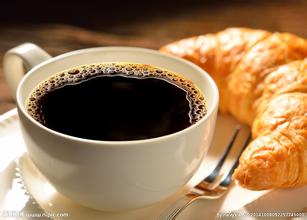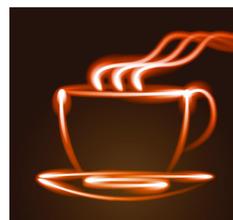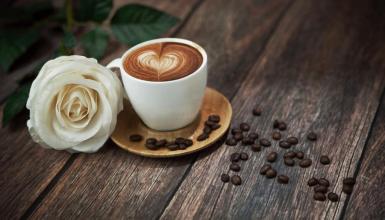Introduction of Coffee blending mixing Technology it is necessary to understand the taste of coffee when blending coffee
Professional coffee is generally roasted in small batches. The most common baking methods are drum baking and hot air baking.
The drum roaster puts the coffee beans in a rotating vat and burns gas or wood to bake them.
When the desired baking degree is reached, the coffee beans can be poured into a cooling funnel to prevent overbaking.
A hot air roaster, also known as a fluidization air roaster, roasts coffee beans by rolling them in hot air.
Most raw coffee beans are roasted at a temperature of nearly 400 degrees. During the baking process, the volume of coffee beans expands by more than 50%, while their weight decreases.
The color of lightly roasted coffee beans is between cinnamon and light chocolate. Because of its sour taste, it is generally not used to make espresso.
Deep baking, comparatively speaking, has a more bitter and sweet flavor. The aroma extracted from coffee beans is proportional to the baking time.
The deeper the baking, the less caffeine and acidity. The color of deep-roasted coffee beans ranges from satin chocolate to oily brown and black. The deeper the baking, the more scorched you taste, and the lighter the flavor of the coffee bean itself.
Especially deep-roasted coffee beans will have a smoky taste, which is more suitable for ordinary coffee than Italian espresso.
Many bakers use the following terms to describe different degrees of baking: cinnamon, medium baking, urban style, fully urban style, French style and Italian style.
On the west coast of the United States, "French style" is often used to describe the deepest baking. You know, this term has nothing to do with the origin of coffee or the place where it is roasted.
There are more than 100 coffee producing areas in the world, and the coffee beans produced have their own characteristics. The mixing of coffee beans is to balance the flavor of coffee in order to create an unparalleled delicacy.
A single coffee bean generally lacks the complex flavor necessary to make a delicious cup of coffee. Many blends contain three to seven different types of beans.
Roasters understand the characteristics of each kind of coffee beans and mix them artistically to create a desired new flavor. The knowledge of roasters mixing coffee beans can be said to be the highest industry secret.
In the United States, 100% Arabica coffee beans are used to mix the best blends. As mentioned earlier in the article, in Italy, some Robster beans are added to mixed coffee to increase the complexity of its fat, caffeine and coffee flavor. Italy has generations of experts who mix coffee beans.
Baking or mixing first has always been a controversial issue among bakers. Generally speaking, each item is baked before mixing.

Important Notice :
前街咖啡 FrontStreet Coffee has moved to new addredd:
FrontStreet Coffee Address: 315,Donghua East Road,GuangZhou
Tel:020 38364473
- Prev

Do you need to know the roasting degree when mixing coffee
(1)A balanced blend of coffee top-grade blend coffee is the best combination of sour, bitter and aromatic coffee beans blended together. For example: strong sour Guatemala coffee beans, sour and sweet Mexican coffee beans, bitter mild Brazilian beans, these coffee beans will be mixed in equal proportions, mixed with the right amount of strong sour Kilimanjaro
- Next

Can deeply roasted coffee beans be blended?
Roasting process: the first 9 minutes: once the coffee is roasted, only 3 minutes, the beans begin to give off the smell of grass. In about 5 minutes, the beans will swell and the color will change from green to yellow and then golden yellow. At this time, the smell changes, and it is similar to roasted wheat. About 9 minutes later, caffeine began to wrinkle and seemed to disappear. The first pop-up sound: around 10 minutes later
Related
- Does Rose Summer choose Blue, Green or Red? Detailed explanation of Rose Summer Coffee plots and Classification in Panamanian Jade Manor
- What is the difference between the origin, producing area, processing plant, cooperative and manor of coffee beans?
- How fine does the espresso powder fit? how to grind the espresso?
- Sca coffee roasting degree color card coffee roasting degree 8 roasting color values what do you mean?
- The practice of lattes: how to make lattes at home
- Introduction to Indonesian Fine Coffee beans-- Java Coffee producing area of Indonesian Arabica Coffee
- How much will the flavor of light and medium roasted rose summer be expressed? What baking level is rose summer suitable for?
- Introduction to the characteristics of washing, sun-drying or wet-planing coffee commonly used in Mantenin, Indonesia
- Price characteristics of Arabica Coffee Bean Starbucks introduction to Manning Coffee Bean Taste producing area Variety Manor
- What is the authentic Yega flavor? What are the flavor characteristics of the really excellent Yejasuffi coffee beans?

